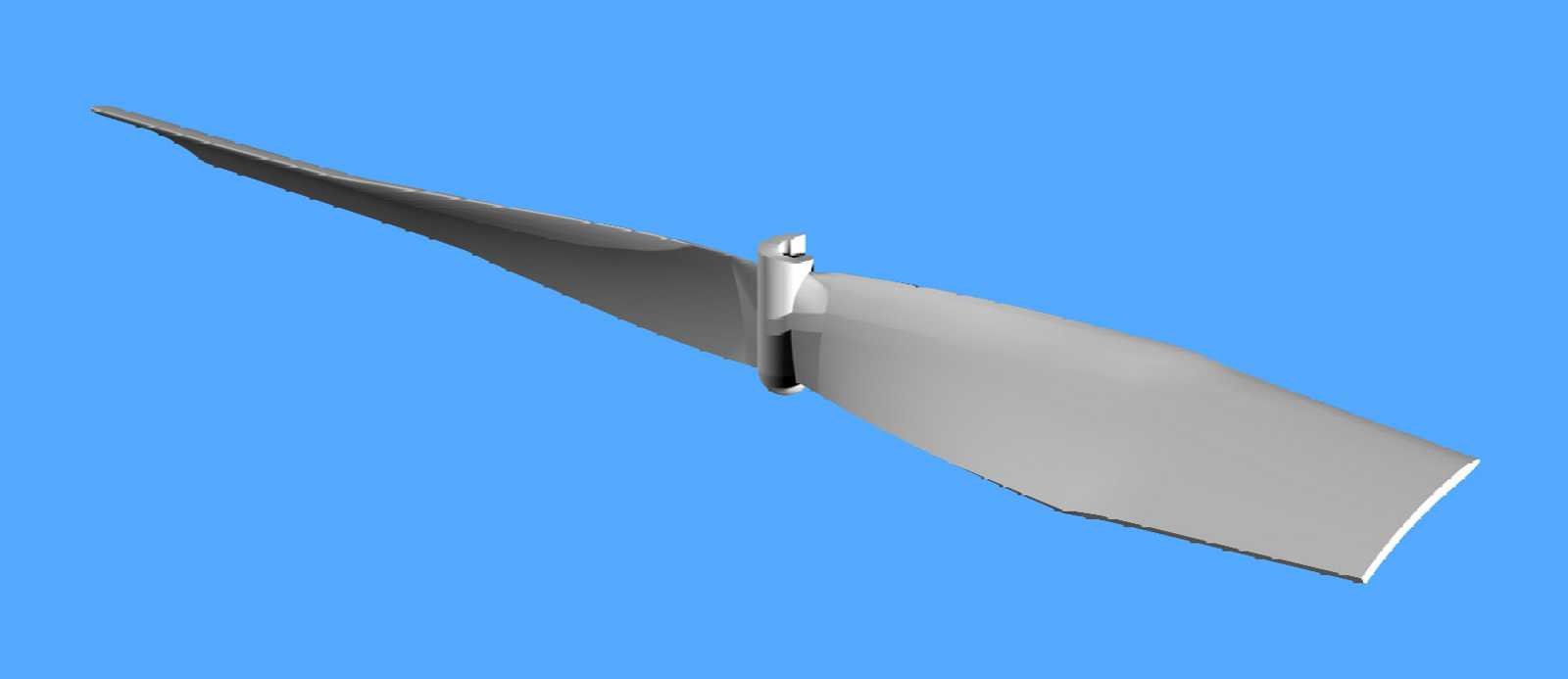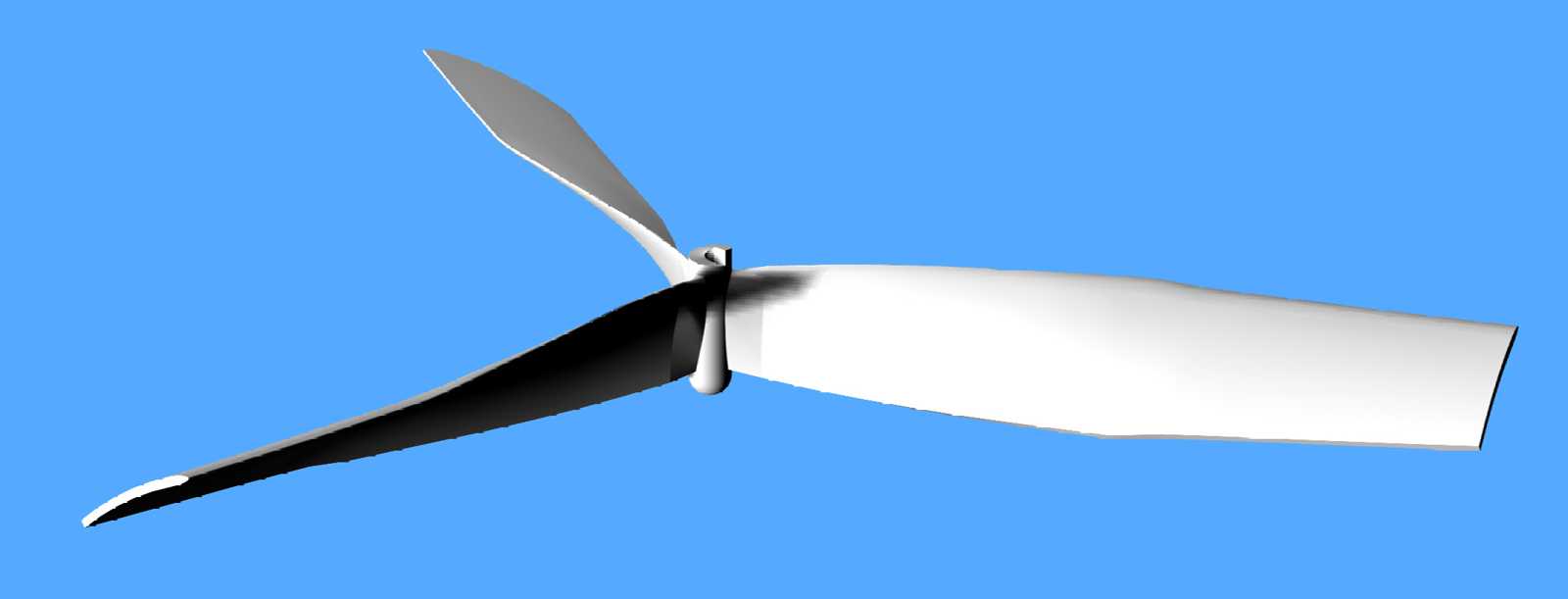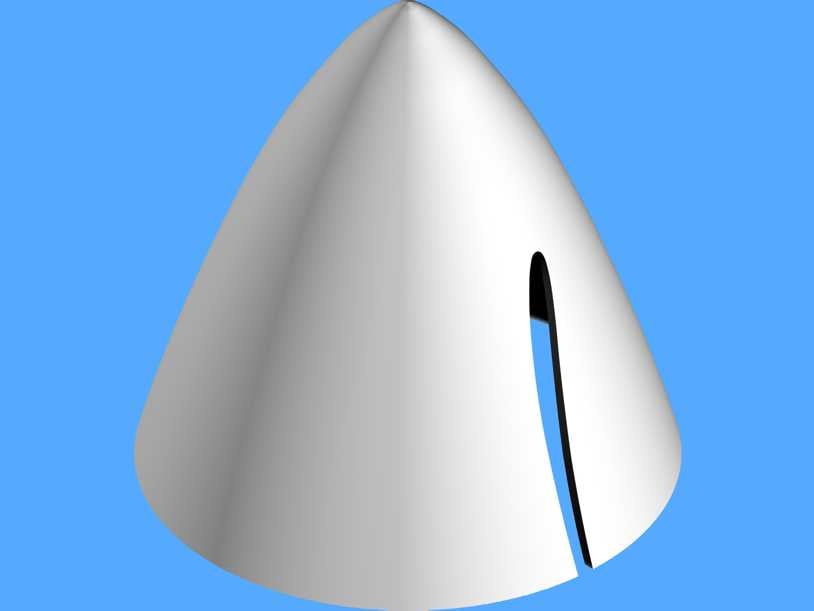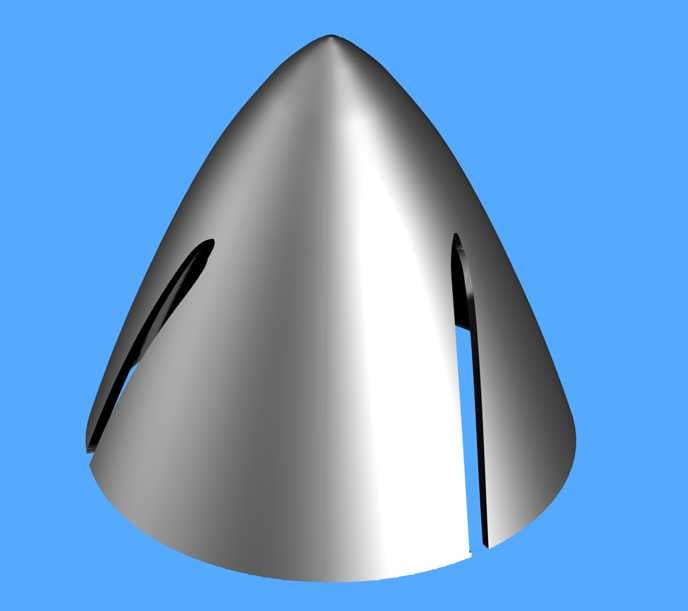3D Printed Props
Presented here are some propellers that can be created using a 3D printer. The props have been developed using hypotwist pitch distributions as described by Bruce Holbrook in an article that is available from the  National Free Flight Society Technical Library. Each prop that is presented here uses a pitch to diameter ratio of 1.2 from the hub out to the 75% point of the blade radius. The P/D then increases linearly to a value of 1.8 at the tip. This pitch distribution has been found through dynamic ground testing as well as on test models to work very well for the class of models contained in the Free Flight plans section of this site.
National Free Flight Society Technical Library. Each prop that is presented here uses a pitch to diameter ratio of 1.2 from the hub out to the 75% point of the blade radius. The P/D then increases linearly to a value of 1.8 at the tip. This pitch distribution has been found through dynamic ground testing as well as on test models to work very well for the class of models contained in the Free Flight plans section of this site.
Both two and three bladed propellers are provided with diameters of 5.5", 6", 7", and 7.5" along with suitable spinners. If you have a 3D printer or want to use a 3D printing service, hopefully you will find these propellers and spinners to be suitable for your applications.
If printing the propellers yourself, we have found that using ABS plastic as opposed to PLA works the best. ABS can be easily sanded and an application of acetone after sanding provides a nice smooth finish. Some post print clean up will be required if you are using one of the common lower cost fused filament 3D printers. The higher end 3D printing service printers, typically Stereolithography printers, should not require any post print clean up.
The spinners include a temporary internal structure. This structure allows the spinner to be mounted on a piece of 1/4" dowel. The spinner and dowel can then be mounted in an electric drill for post print sanding. Once the spinner has been sanded it can be painted while still on the dowel. When post print clean up/painting has been completed, the internal structure is cut away.
One other note, if using a fused filament printer. You will need to print the props using supports. We have found that the post print clean up is easier if you print the prop with the forward face down.
 Two Blade Props |  Three Blade Props |  Two Blade Spinners |  Three Blade Spinners |